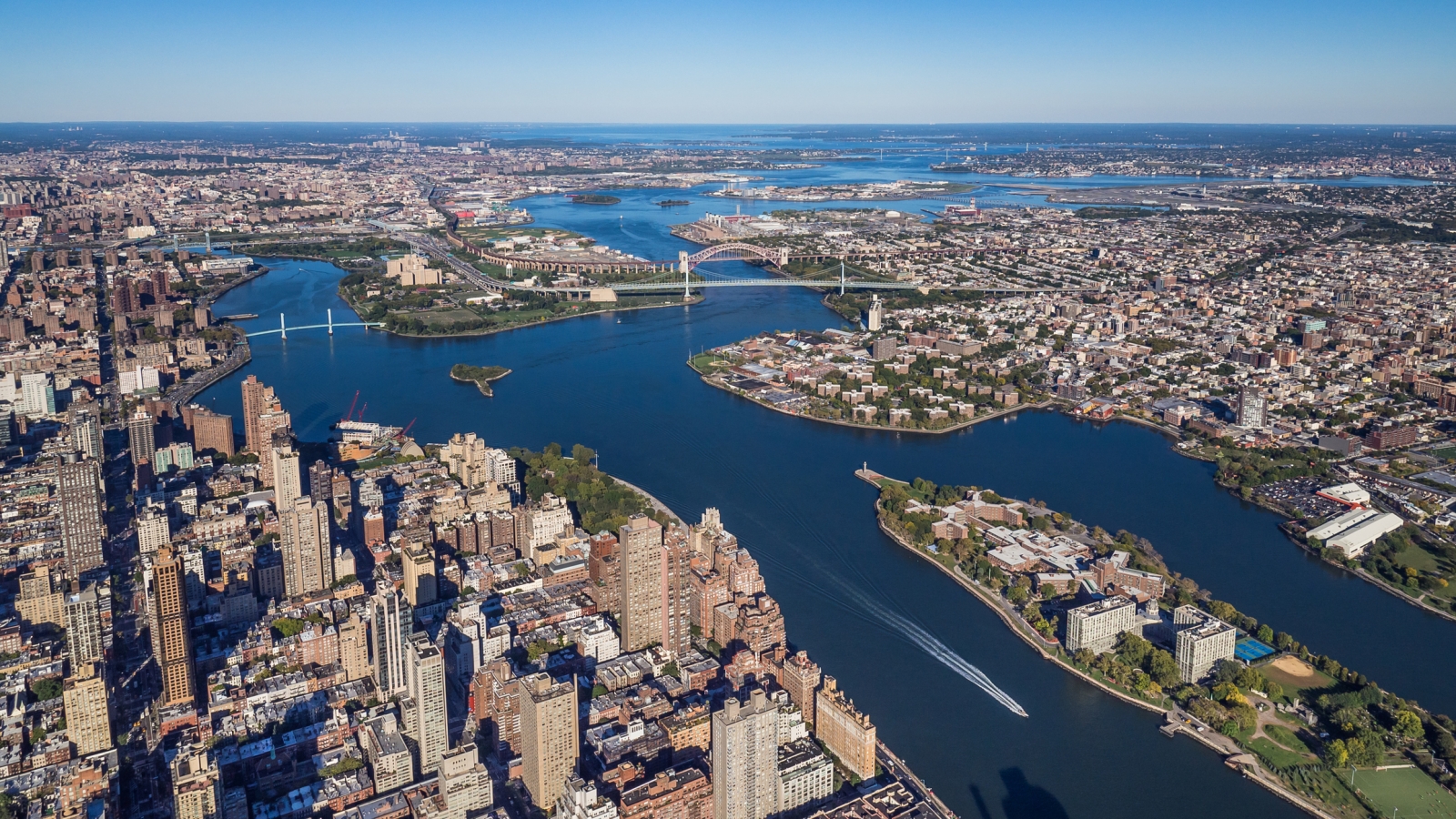
Is Queens on Long Island? Is Brooklyn part of Long Island? Technically, yes, but there are some important caveats. (Getty Images)
Newcomers to New York City may notice a conversational quirk when it comes to Brooklyn and Queens. These two boroughs are often talked about as if they’re part of New York City — which they are. On a map, though, both boroughs sure look like they’re part of Long Island. So is Brooklyn on Long Island? Is Queens? And while we’re at it, where does that famous Long Island accent come from, anyway?
Is Brooklyn on Long Island? Is Queens Part of Long Island?
Generally speaking, and physically, yes. Brooklyn and Queens are parts of Long Island. But when people talk about “Long Island,” they almost always mean not Brooklyn or Queens, but Nassau and Suffolk counties, which cover the rest of Long Island and have a very different atmosphere and character.
Brooklyn and Queens have been boroughs since 1683, and part of New York City since 1898. They’re both positioned at the west end of Long Island. But culturally, demographically, and in terms of sports-team allegiance, Long Island stands apart.
For example, New York hockey fans tend to be loyal to the Rangers. Long Island has its own National Hockey League team, the Islanders, which splits its time between the Nassau Coliseum and Barclays Center in Brooklyn. The team won four consecutive Stanley Cups from 1980 to 1983, but despite that success, it’s never really been accepted at Barclays Center. The Islanders are now planning their own arena next to Belmont Racetrack in Elmont — just over the undefended border with Queens, but in Nassau County nonetheless. That’s where many fans would say they belong.
Why ‘Long Island’ Usually Means Nassau and Suffolk Counties
Suffolk County was founded in 1683 and takes up the bulk of Long Island’s real estate; it’s larger in area than Kings (Brooklyn), Queens and Nassau counties combined. However, with a population of approximately 1.5 million, it’s the least-populated county on the island.
Nassau is New York state’s newest county. It was created in 1899 out of a dispute with Queens: Its western counties voted to join Greater New York in 1898, while eastern Queensites did not have a vote; they wanted the county courthouse to be in Mineola, not further west in Long Island City. Their towns were mostly farmland, and Greater New York’s determiners wanted no part of them.
What If NYC Extended Across More of Long Island?
It’s interesting to speculate what Greater New York City would have been like had those eastern counties not split, and NYC stretched from Staten Island north to the Bronx and then further east to the Suffolk County border from Cold Spring south through Farmingdale to Amityville. While the North Shore of Nassau County has remained greatly suburban, with plenty of large estates and wide-open spaces, the mid-island and south shore became rather urbanized, with Hempstead and Mineola looking very Queens-like. The website Extend NY brings Manhattan’s street grid worldwide, and while the Queens street numbering system ends at 271st Street in Floral Park, you could probably add 100 more streets to it if Queens county still ran all the way east to the Suffolk line.
The Long Island Accent: Is It Different From the NYC Accent?
The typical Long Island accent evolved a little differently, with flat vowels that have turned “aw” to “oo-aw” (coffee, dog), and consonants at ends of words showing up at the beginning of the next word (Long Guyland). Filmmaker Heather Quinlan, however, asserts in her documentary “If These Knishes Could Talk” that New York-region accents are not so much determined by region as by nationality. There’s no Bronx accent, Quinlan says, but rather a Jewish New York accent, and Irish one, and so on. It’s possible that the Long Island accent is a mixture of these many groups who moved to suburbia after World War II.
Kevin Walsh is the webmaster of the award-winning website Forgotten NY, and the author of the books Forgotten New York (HarperCollins, 2006) and also, with the Greater Astoria Historical Society, Forgotten Queens (Arcadia, 2013)
—
Hey, why not like StreetEasy on Facebook and follow @streeteasy on Instagram?









